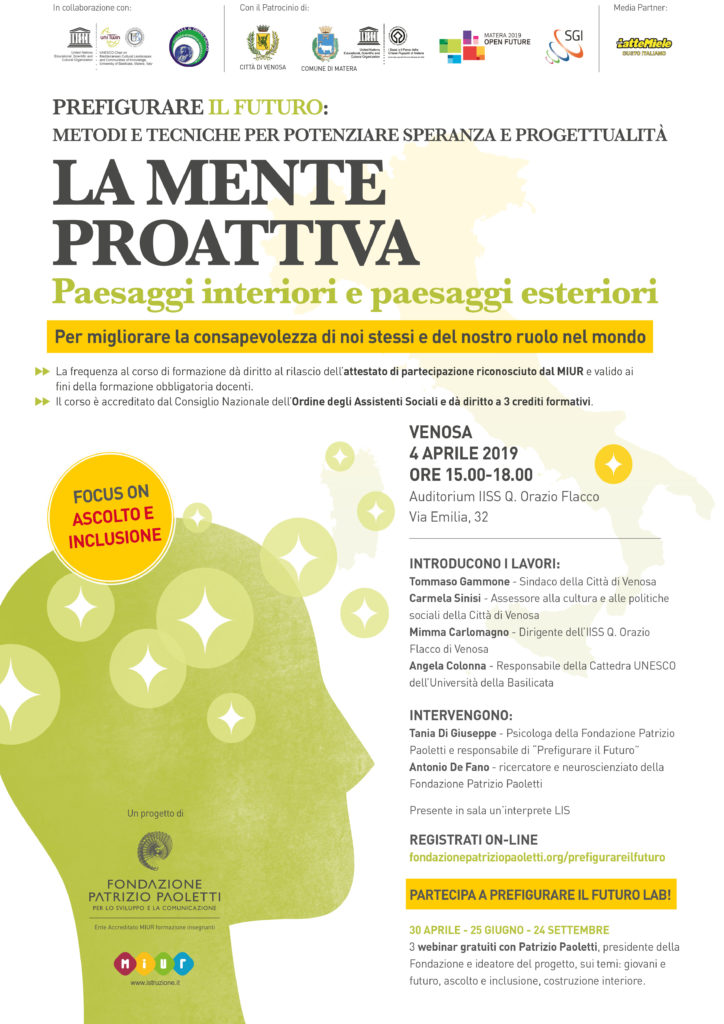About how we function
We are in the middle of an epistemological change and we are looking for tools to prefigure scenarios beyond the known horizon. In this epochal transition we are looking for ways to restructure our view of reality, to become sustainable, and for this we need to understand how we function, as individuals, as a society and as a species, in order to be able to draw on our deepest resources.
There is a constant interdependence between external and internal, between the outer world and our inner world. Neurophenomenological research indicates that consciousness is in the uninterrupted circuit between outside and inside. Narration is a bridge between outside and inside, and can be used as a conscious instrument of dialogue between the outer and inner landscape. A new narrative generates a new look, and a new possibility appears in the mind.
It is more and more evident the influence of landscapes, places, physical environments, through the sensations they stimulate, on people’s emotional and cognitive states. The body-mind, as a complex sensorial-emotional-cognitive system, constantly receives and decodes information and impressions from the world in which it is immersed.
So, is it possible to stimulate states useful for human evolution, such as peace and sustainability? Can we learn to build and facilitate others in the construction of “Inner Landscapes oriented towards Peace and Sustainability“? These are some crucial questions for the UNESCO Chair and constitute a sensitive core for investigation and orientation in actions.
In this regard there are two areas of research, one in the world of cognitive neuroscience, the other in the world of cultural history.
The second is where the UNESCO Chair can develop its own contribution. On the one hand, therefore, there are the neuroscientific studies on the relations between psycho-neurological states, physical environments and brain activation, to which the UNESCO Chair looks with interest. On the other hand there is a red line of investigation into the functioning of memory and the organization of thought, the relationship between physical and mental loci and imagines agentes, and the complex relationship between figures and ideas, images and words, which goes back to the ancient art of Greek rhetoric, to Renaissance studies and theories, with the Teatro della Memoria by Giulio Camillo Delminio, the art of the memory of Giordano Bruno, the “Architetti Sapienti“, up to the Mnemosine Atlas by Aby Warburg in the 20th century, which is a specific area of interest for the UNESCO Chair in relation to demand.
Outer Landscapes/Inner Landscapes is a guiding idea for the UNESCO Chair and some initiatives on “landscape as a symbolic form” and “iconology of the Mediterranean landscape” are also being planned, with which to launch a specific line of investigation on “Architecture and Landscape between visible and invisible: the physical space and the theatre of the mind”.
On Outer/Inner Landscapes the UNESCO Chair has a dialogue with the “Fondazione Patrizio Paoletti per lo Sviluppo e la Comunicazione”, its partner. In this regard, the UNESCO Chair has hosted two appointments as part of the WUC programme “Prefiguring the future: methods and techniques to enhance hope and planning”, a project of the “Fondazione Patrizio Paoletti per lo Sviluppo e la Comunicazione”, with the event “La mente proattiva. Paesaggi interiori e paesaggi esteriori“, in Venosa in April 2019.
TOOLS:
In the age of knowledge, strategic skills are what make us capable of supporting and guiding change to meet the challenge of our time: sustainable development. The first change is the personal change of our vision.
Some ancient techniques and devices can be used to become aware of some aspects of how we function, to have insights into our own potential, to train some strategic skills.
A device is the theatre of memory (based on the model of ancient mnemonics and the model of Giulio Camillo Delminio), with exercises of memorization or organization of a speech, in which one becomes aware of the understanding of the spatial functioning structure of thought, its associative process, the correspondence between inner and outer places, and how to use these mechanisms to increase awareness and will. Other exercises concern the device of rhetoric, with the research of information, its verification, its organization, dialectics and the organization of knowledge. The practice develops conversation competence and understanding of the intimate connection between dialogue with others and dialogue with oneself.
Another device is the Mnemosyne Atlas (based on Aby Warburg’s model), with exercises in the creation of maps of relationships between images and between meanings, with which one becomes aware of the understanding of certain aspects of the functioning of thought, the associative mechanism, the process of constructing meaning, the re-elaboration of memories, and facilitates the emergence of intuitions about the centrality of narration in the use of experience/knowledge.

